If you fancy a dip in the sea around Gáldar you need only to throw a dice. You are sure to roll a lucky number. You can’t roll a wrong number, because just off the main road there is a shoreline packed with small enclaves with the aromas of the seaside all along the north coast of Gran Canaria.
Such places include Caleta de Arriba, El Agujero, Dos Roques, La Furnia, Punta de Gáldar, Sardina… together making up a complete itinerary of coastal locations scattered all over the map, here to offer you a splash in the sea.
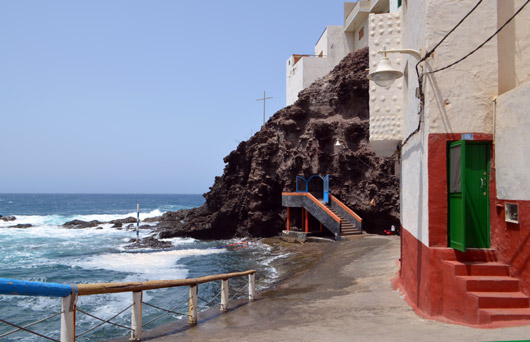
The whole coast around the municipality is dotted with charming spots looking out over the sea. None of these tiny beaches ever gets busy, so peace and quiet is the norm around here. There might be a few more or a few less depending on the time of year, but the coves around the north live life at a leisurely pace.
In the eyes of fans of 'hidden away spots', the Gáldar coastline has a particular charm, a seal of its own. The Atlantic Ocean comes right to the door step, making life enjoyable for fishermen and surfers alike, because the sea around here definitely leaves its mark.
But no need to worry, safe bathing is guaranteed. Defences and protective walls have been built to allow for bathing. There are natural pools and protected coves that provide fun for those in search of peace and quiet.
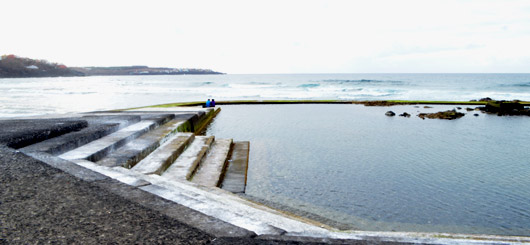
The human landscape along these beaches doesn’t change, it stays the same from generation to generation. Kids have old fashioned fun, diving in and out of the waters surrounded by old seamen’s equipment that are a reminder of old professions that have gradually fallen by the wayside, along with the ice cream seller who is also swimming against the modern economic tide. He moves around the coves one by one, announcing his arrival with a blow of his sea shell, just like the early Canarians did five centuries ago. The seller carries a cold box full of quaint "Bakokas" ice-creams around with him, which are nothing like 'everyday' ice-creams, and which can be bought for just over a euro each.
And that’s how it is, the simple life. There is no other programme for our day on the beach along the coast of Gáldar, surrounded as we are by seamen’s houses, on quiet beaches, and proper ice-creams, alongside other quiet bathers, all going for a splash in slow motion.
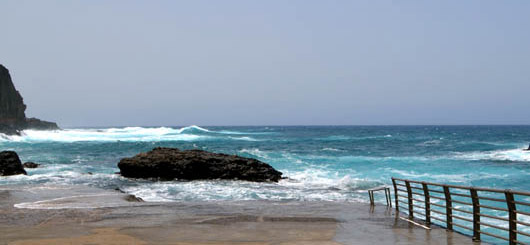
Heritage and Culture by the seashore
The municipality of Gáldar is not just a place for sea bathing. The north of Gran Canaria is a must visit for anyone interested the island’s pre-Hispanic culture, and in its ancient traditions.
They will find a number of points of interest, although of all its archaeological jewels the standout attractions are the Painted Cave, the Agujero Settlement, and the Necropolis of La Guancha, all of these key sites of the island’s prehistoric period.
The first of these, the Painted Cave Museum and Archaeological Park, will provide an entertaining tale of what life was like for the first inhabitants on the island. This is the premier site for the study of pre-Hispanic Gran Canaria and the tumultuous events that culminated in 1483 with its joining the Crown of Castile.
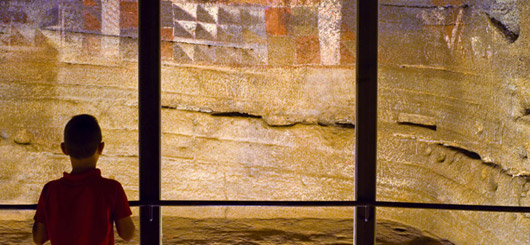
The Painted Cave is the finest and most complex example of indigenous wall painting in Gran Canaria, and the walk around the Settlement provides an insight into the organizational backbone of life for the community of the time. It occupies a substantial area where the original indigenous dwelling areas have been both recuperated and recreated.
The Necropolis of La Guancha corresponds to one of the highest concentrations of houses and burial mounds in this region of the island. Its original surface area would also have been quite a lot larger than the present day remains.
In Gáldar we can also visit the House-Museum of painter Antonio Padrón, one of the most unique artists of 20th century Spain. His museum showcases virtually all the work he did during his life.
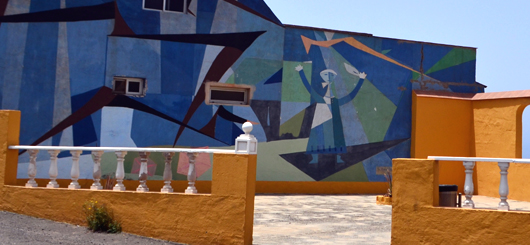
The painter also left his mark outside the museum, with works such as the replica of the "Rayo Verde" that decorates the Fishermen's Viewpoint, on the way to Caleta de Arriba.
Other interesting buildings include the Church of Santiago de los Caballeros, the Town Hall Building, with its century-old dragon tree on the inside, considered to be the oldest on the island, the Casa Verde de Aguilar and the Casa del Capitán Quesada.
From the capital Las Palmas de Gran Canaria, situated to the northeast, take the GC-2 'North Road', towards Gáldar.
You will reach Gáldar in about 45 minutes along this road. It is easy to find the Antonio Padrón Museum, as it is right in the heart of town.
In order to get the coastal areas in the municipality, we need to go through a maze of greenhouses that cover some 44% of the farming areas.
But if we wish to take a more straightforward route there, we must follow the main road until we see a sign for 'Sardina del Norte'. Continue along the GC-202 until the crossroads which indicates a turning off to the settlement of La Guancha, next to which are the natural pools at El Agujero.
We will come to a turning off along this road, and access to the rest of the enclaves of Dos Roques, Caleta de Arriba and La Furnia.
If we wish to continue as far as Punta de Gáldar we must stay on the GC-220 until we reach a turning off further on.
Most of the roads separating the different plots of land are tarmac roads, but are quite narrow, so it can be easy lose our sense of direction. It shouldn’t be difficult however if we keep an eye out for the signposts of all the different coves and bathing areas. If we start our coastal route along Caleta de Arriba we can go around the coastline westwards, and thus get to see every single nook and cranny. People from here are are kind and helpful, and will be pleased to help out if need be.
- Gáldar Tourist Information Office
At the Town Hall building in Plaza de Santiago 1. Telephone: (+34) 928 895 855
In this building visitors are treated to the interior courtyard and its century-old dragon tree, and can visit the Plenary Room and the Town Hall Theatre.
- Gáldar Town Hall Theatre
This theatre is considered to be the finest example of show-building architecture in a non-capital city in the Canaries. It features the sculpture by Pepe Dámaso on the dome, a snail decorated with aboriginal motifs.
- Painted Cave Museum and Archaeological Park
c/ Audiencia, 2
This museum has grown over the years without losing sight of its mission: the conservation and display of one of the most relevant archaeological sites for delving into the history of Gran Canaria.